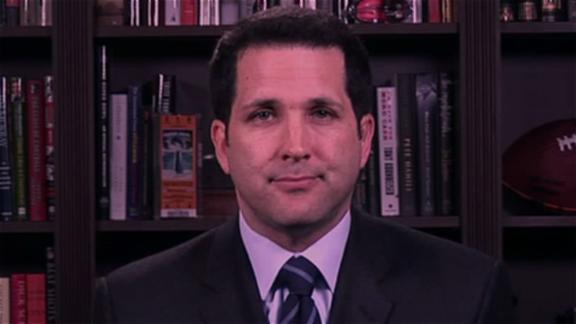MINNEAPOLIS -- Harmon Killebrew, the Minnesota Twins slugger known for his tape-measure home runs, has died at his home in Scottsdale, Ariz., after battling esophageal cancer. He was 74.
The team said Killebrew died peacefully Tuesday morning with his wife, Nita, and their family at his side.
He had announced in December that he had been diagnosed with cancer. Last week, Killebrew announced that doctors had deemed his cancer incurable and he would no longer fight the "awful disease."
Killebrew hit 573 home runs during his 22-year career, 11th-most in major league history. His eight seasons with 40 or more homers still is tied for second in league history to Babe Ruth.
"No individual has ever meant more to the Minnesota Twins organization and millions of fans across Twins territory than Harmon Killebrew," Twins president Dave St. Peter said. He said Killebrew's legacy "will be the class, dignity and humility he demonstrated each and every day as a Hall of Fame-quality husband, father, friend, teammate and man. The Twins extend heartfelt sympathies and prayers to the Killebrew family at this difficult time."
Former teammate Tony Oliva said Tuesday the Twins flew him out to Arizona on Saturday so he could spend time with Killebrew.
"It's very hard, we knew each other about 50 years," Oliva told ESPN on Tuesday after learning of Killebrew's death. "I saw him Saturday and he looked very good, even though he was very sick. He was smiling and making jokes."
Killebrew broke in with the Washington Senators in 1954 as an 18-year-old. He spent most of his first five seasons in the minors, then hit 42 homers in his first full season in 1959.
The Senators moved to Minnesota in 1961, and Killebrew hit 190 homers in his first four seasons there, including 49 in 1964.
The 11-time All-Star was the American League's Most Valuable Player in 1969 after hitting 49 home runs with 140 RBIs and 145 walks, all team records that stand to this day.
"I found out early in life that I could hit a baseball farther than most players and that's what I tried to do," Killebrew said.

Behind their soft-spoken slugger nicknamed "The Killer," the Twins reached the World Series for the first time in 1965 and back-to-back AL Championship Series in 1969 and 1970.
Former Twins owner Calvin Griffith used to call Killebrew the backbone of the franchise. "He kept us in business," Griffith said.
The man whose silhouette inspired Major League Baseball's official logo was elected to the Hall of Fame in 1984, the first Twin to be enshrined. Killebrew's No. 3 jersey was retired in 1975. Killebrew's easygoing demeanor contrasted starkly with his nickname and standing as one of baseball's most feared hitters.
"I didn't have evil intentions," Killebrew said on his website. "But I guess I did have power."
Harmon Clayton Killebrew was born June 29, 1936, in the Idaho farm town of Payette. He was an all-state quarterback in high school, but it was his power with a baseball bat in his hands that got Killebrew noticed by Washington Senators scout Ossie Bluege.
On Killebrew's website, Bluege recounts the story of how he signed the 17-year-old to a $30,000 contract in 1953.
"I waited for the rain to stop in Payette, Idaho and then he hit one a mile over the left field fence," Bluege said. "I stepped it off the next morning and measured it at 435 feet. That convinced me."
Killebrew didn't just hit balls over the fence, he turned at-bats into longest-drive contests. He never worried much about his short game, preferring instead to swing for the fences, and wound up with a career .256 average.
"I didn't think much about batting average when I was playing," Killebrew said.
On June 3, 1967, Killebrew belted the longest home run in Met Stadium history, a shot that reached the second deck of the bleachers in the old park, some 500 feet from home plate.
"He hit line drives that put the opposition in jeopardy," Bluege once said. "And I don't mean the infielders. I mean the outfielders."
Killebrew finished his career with one season in Kansas City in 1975.
Jane Forbes Clark, chairwoman of the National Baseball Hall of Fame and Museum, said Killebrew personified Hall of Fame excellence and was simply one of the greatest hitters of all time.
"Since joining the Hall of Fame family in 1984, Harmon was a beacon of light among his fellow Hall of Famers, always smiling, always enjoying every moment that life delivered to his doorstep," she said. "We have so many fond memories of this wonderful baseball hero, and we will miss him enormously."
Killebrew and Nita had nine children.
In retirement, he became a successful businessman in insurance, financial planning and car sales. He also traveled the country with baseball memorabilia shows and returned to the Twin Cities regularly, delighting in conversations with fans and reunions with teammates.
"I never thought anything would compare to being elected into the Hall of Fame, but being able to interact with fans once my playing days were over has been just as gratifying," Killebrew said.
Information from ESPN's Willie Weinbaum and The Associated Press was used in this report.



 The 8th U.S. Circuit Court of Appeals granted the NFL's request for a permanent stay of a ruling that briefly halted the lockout. Read the order here.
The 8th U.S. Circuit Court of Appeals granted the NFL's request for a permanent stay of a ruling that briefly halted the lockout. Read the order here. 






0 Comments:
Post a Comment
nemdil welcome
Subscribe to Post Comments [Atom]
<< Home